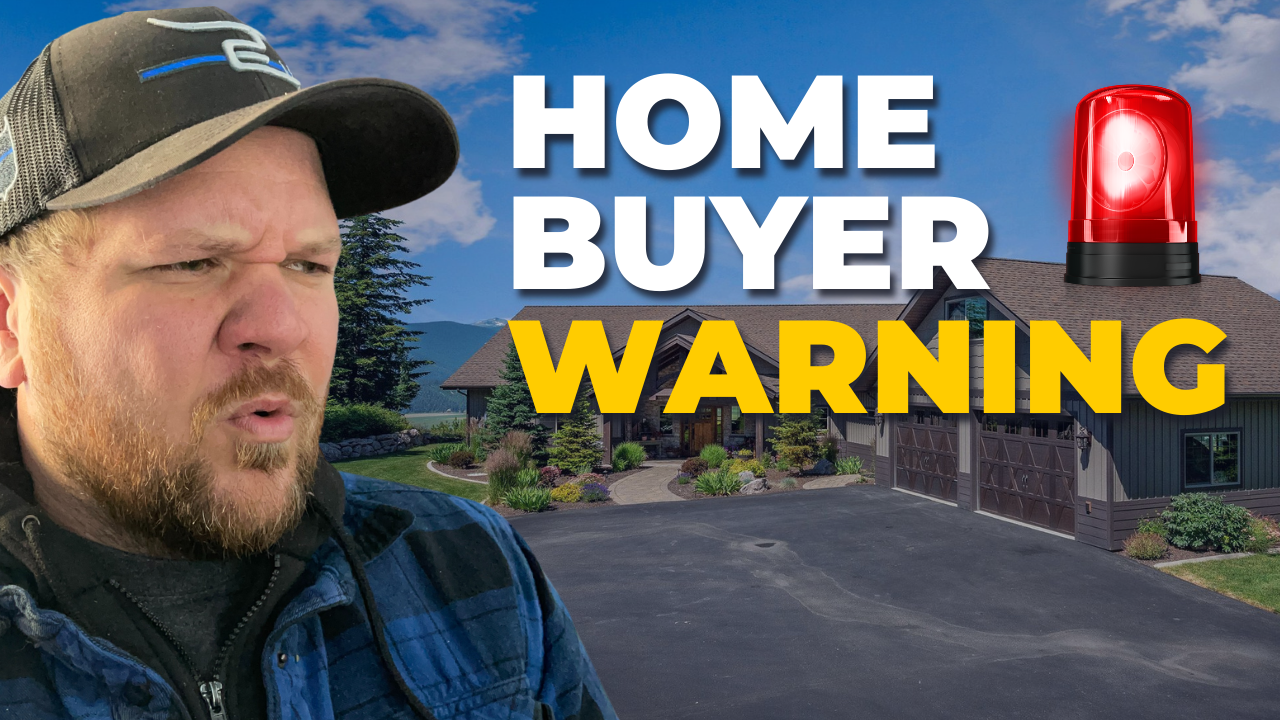Buying a home in Sandpoint could be the best decision you ever make—or the most expensive mistake. Hidden issues, from train noise to zoning laws, can turn your dream home into a costly regret. Let’s walk through the seven key things you need to watch out for when buying a home in Sandpoint.
1. Living in a Train Town
If you don’t already know, Sandpoint is a train town. Trains run through nearly every part of the area—downtown, north, south, east, and west. Some people love the nostalgic sounds, but if your home is too close to a crossing, that horn can be disruptive, especially at night. The key is knowing exactly where the nearest crossing is in relation to your potential home. If train noise is a dealbreaker for you, talk to your real estate agent about quieter areas like Far East Sagle or Northeast Sandpoint.
2. The Hidden Danger of Radon
Radon is a naturally occurring gas that can accumulate in homes and pose health risks. You can’t test for radon in open land, but once a home is built, the gas can get trapped inside, leading to high exposure levels. The good news? Testing is simple, and if elevated levels are found, sellers are often willing to install mitigation systems. Make sure your agent includes radon testing as a secondary inspection to ensure you have enough time to get results before closing.
3. Milfoil: The Unwanted Waterfront Guest
Picture this: You buy a beautiful waterfront home, only to discover by late summer that the lake is covered in thick, green milfoil. This invasive aquatic plant thrives in slow-moving or stagnant water, making some smaller lakes and rivers particularly vulnerable. While there are ways to control it, if your neighbors don’t care, you may be fighting a losing battle. If you’re considering a waterfront home, do your research on milfoil presence and potential removal costs.
4. Dock Permits: Read the Fine Print
If your dream home includes a private dock, make sure the dock permit is properly transferred to you. A dock that isn’t permitted correctly—or has unapproved modifications like a boat lift or kayak rack—can create legal headaches. Before you buy, review the permit and confirm that all existing structures are officially approved.
5. The City’s Slip Inspection Requirement
Buying a home within Sandpoint city limits? Pay attention to the sewer line. Any home that hasn’t been inspected in the past five years requires a city-mandated slip inspection. If this step is overlooked and the sewer line fails after closing, you could be on the hook for expensive repairs. A smart real estate agent will include language in the contract requiring the seller to provide a passing slip inspection before closing.
6. Well and Septic Surprises
For rural properties, wells and septic systems are standard. While well reports will show depth and production levels, additional testing may be necessary if you plan to use a lot of water for gardening or livestock. Septic systems should always be pumped and visually inspected before purchase, but for an in-depth check, request a camera inspection of the drainfield lines. These extra steps can prevent costly surprises down the road.
7. Zoning Laws Can Crush Your Plans
Many people move to North Idaho with big dreams—whether it’s building a second home, running a business, or keeping animals on their land. But zoning laws can quickly derail those plans. Just because a property has a certain zoning designation doesn’t mean you can do whatever you want. Always check with the county or city to ensure your vision aligns with the property’s zoning restrictions before you buy.
Final Thoughts
Buying a home in Sandpoint is an exciting journey, but hidden issues can turn that excitement into frustration if you’re not prepared. By being aware of these seven potential pitfalls, you can make an informed decision and find the perfect home for you and your family.
If you’re thinking about buying in Sandpoint, I’d love to help you navigate the process. Schedule a consultation with me, and let’s find the right home—without the costly surprises!



